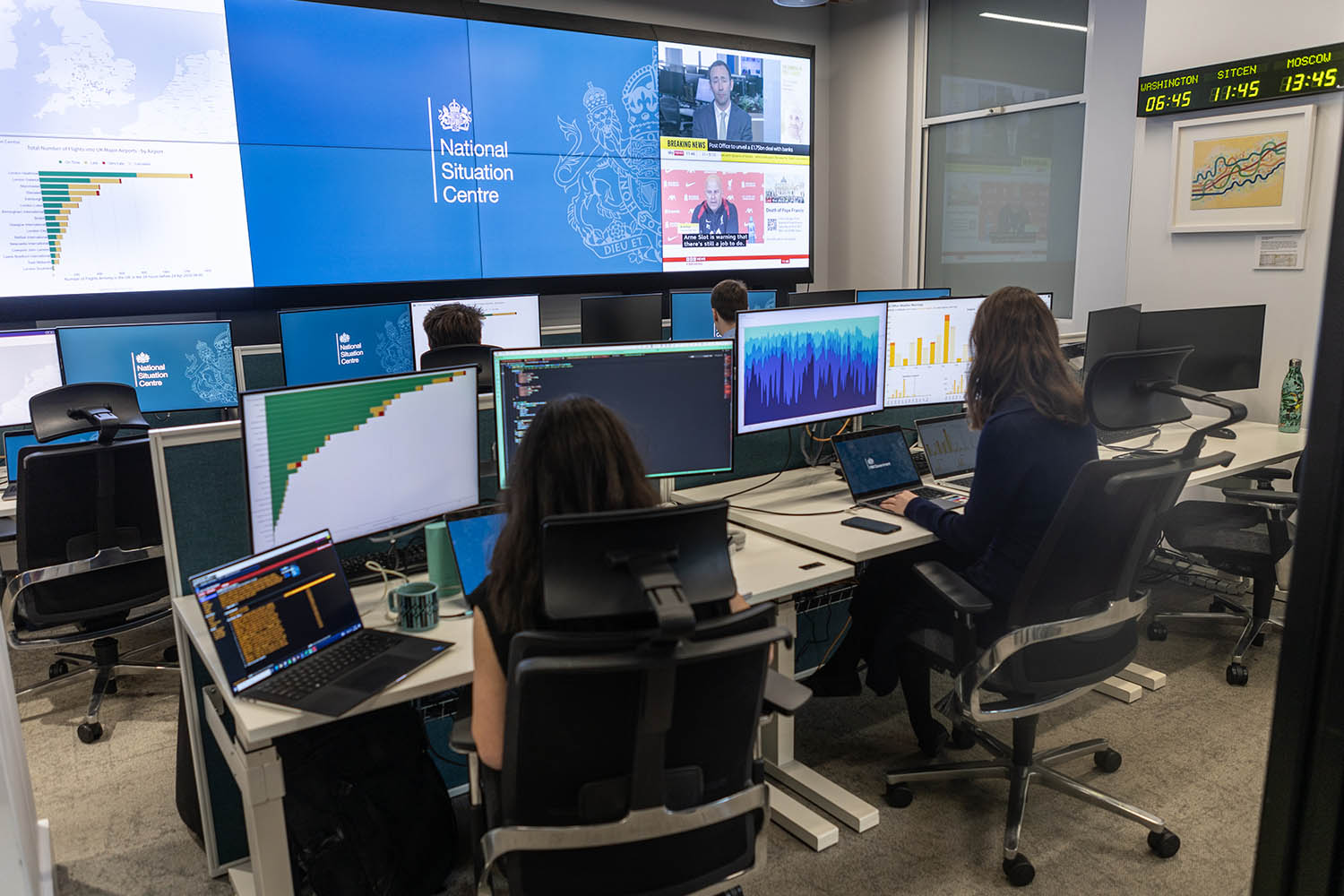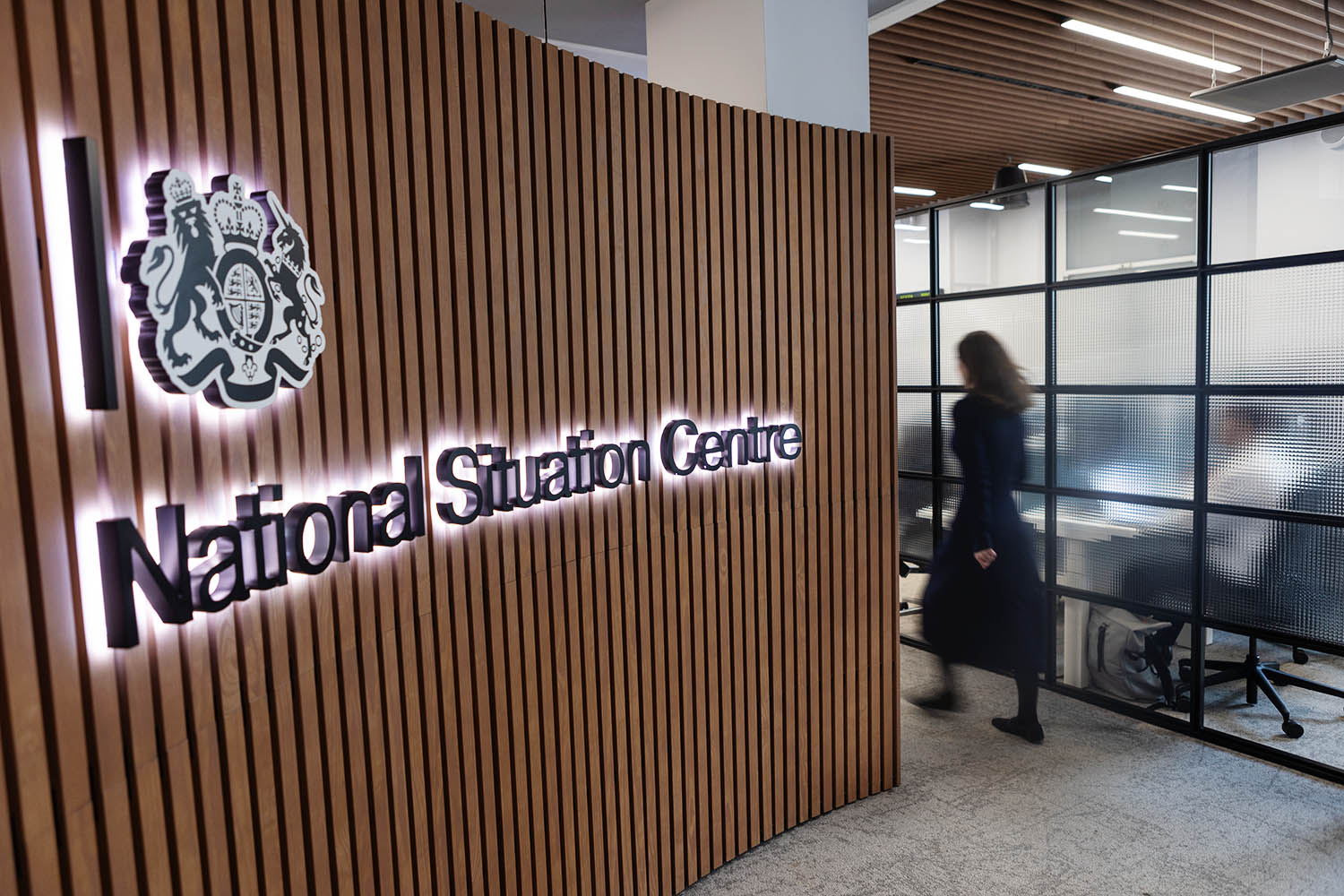At 6:29am on a cloudy September morning in 2022, the last person in The Queue stepped through the entrance to Westminster Hall.
Over five days some 250,000 members of the public had been to see Queen Elizabeth II lying in state before her funeral, yet somehow the authorities had timed it perfectly and Chrissy Heerey, a serving member of the RAF, crossed the threshold with a minute to spare.
But this was not down to luck. A small team of officials sitting within the Cabinet Office had spent hours crunching data from multiple sources to advise stewards of exactly the right pace to usher people through so that everyone got their turn.
The team behind this small but significant moment is the same one that ministers rely on for analysis that helps them to respond to major crises ranging from life-endangering weather patterns and health threats to human-led emergencies like last summer’s riots.
These officials work in the SitCen, the Situation Centre that was the brainchild of Dominic Cummings – a name which still prompts embarrassed laughter albeit alongside grudging respect for his foresight on this issue, if not his trip to Barnard Castle. The changes that have been implemented are now the envy of the world – said to outgun even the White House’s $50m upgrade in 2023 – while Sweden has made a direct copy of the facilities.
The Observer was granted a rare moment of access to the highly classified room, which lies close to its more famous cousin the Cabinet Office Briefing Room (COBR), as the government prepares to roll out access to a new tool that it hopes will give other parts of the government – regional, devolved and central – access to real time crisis data from which to make better decisions.
The situations the team monitors on a 24/7 basis vary widely, but include a breakdown in industrial relations – officials were advising ministers on British Steel, viewed as having the potential to evolve into far more than just an economic concern – as well as public health risks, such as a recent outbreak of Foot and Mouth disease in Germany, Hungary and Slovakia.
Officials are also on the lookout for that hardest to predict element of life: human behaviour. Last summer the murder of three young girls at a Taylor Swift-themed dance club sparked a wave of civil unrest. The SitCen team monitored aggregated mobile phone data, social media and other data to identify likely incident hotspots of activity, ensuring both local law enforcement and ministers had the information they needed to respond in real time.

SitCen is dominated by an enormous screen showing live news alongside real-time data. Here, a handful of analysts, crisis specialists and Osint experts scan the horizon for the next likely problem to emerge. The room launched three years ago, but from this week those working in it – and others around the country – will be assisted by a new risk vulnerability tool that offers a new generation level of information.
The tool will help inform where resources are most needed, acting as what one senior government official described as “data-driven load-bearing”.
If there’s a storm that could knock out electricity supplies and pose a risk to life, the tool will identify affected areas with limited access to gas supplies that may need more support. If public health bodies start warning about a rise in an illness that is particularly spread amongst children, this tool will tell you where the hotspots with those under six are, or in the reverse scenario, those over 65. Areas with higher poverty, or rates of ethnic minorities, can also be pinpointed, helping authorities to tweak campaigns to meet specific cultural needs, as well as more fundamental support.
If this segmentation of demographic data brings back memories of Covid, perhaps that’s not surprising: it’s not just Cummings whose shadow looms large in the Cabinet Office.
There is a widespread acknowledgement that the 1970s-era office block – itself built on the grounds of Henry VIII’s tennis court – was not fit for purpose when the pandemic hit. When decisions should have been made on facts, instead they were being made by instinct, often out of Number 10 – a refutation of the entire rationale of COBR.
So it’s not just technological advancements that are behind the SitCen and risk vulnerability tool. That palpable sense that when the country needed it most, the government was incapable of delivering, is too.
For all the horizon scanning, as the last-minute grappling with British Steel demonstrates, not every crisis can be anticipated. But call it lessons learned or call it atonement, the intention behind the SitCen and its risk vulnerability tool is that the country will never again be left so badly supported.
Photographs Andy Hall

